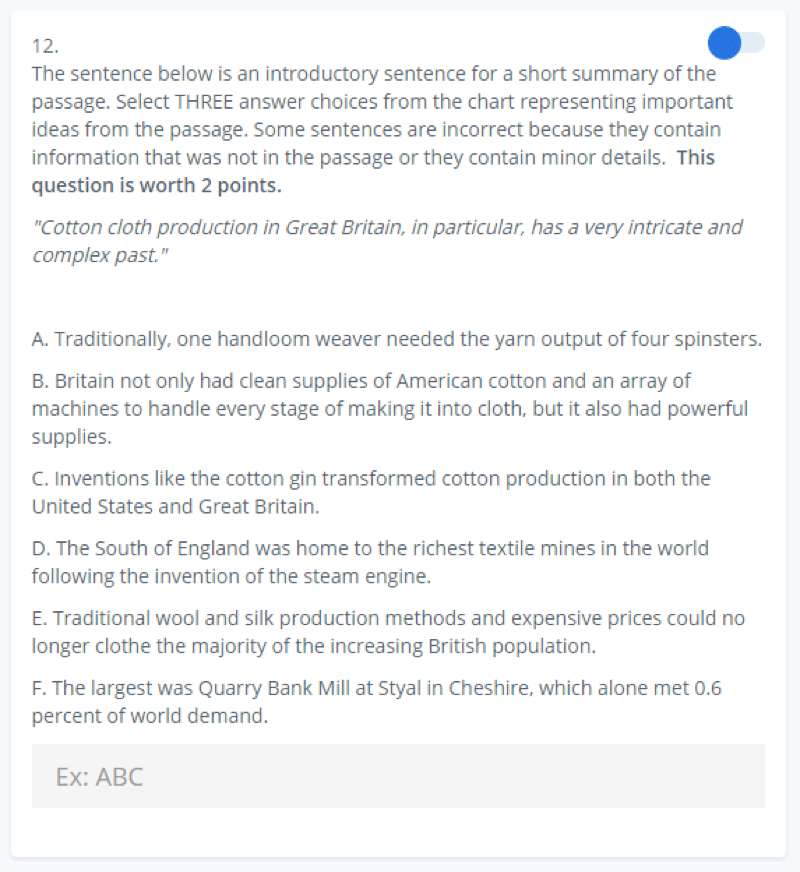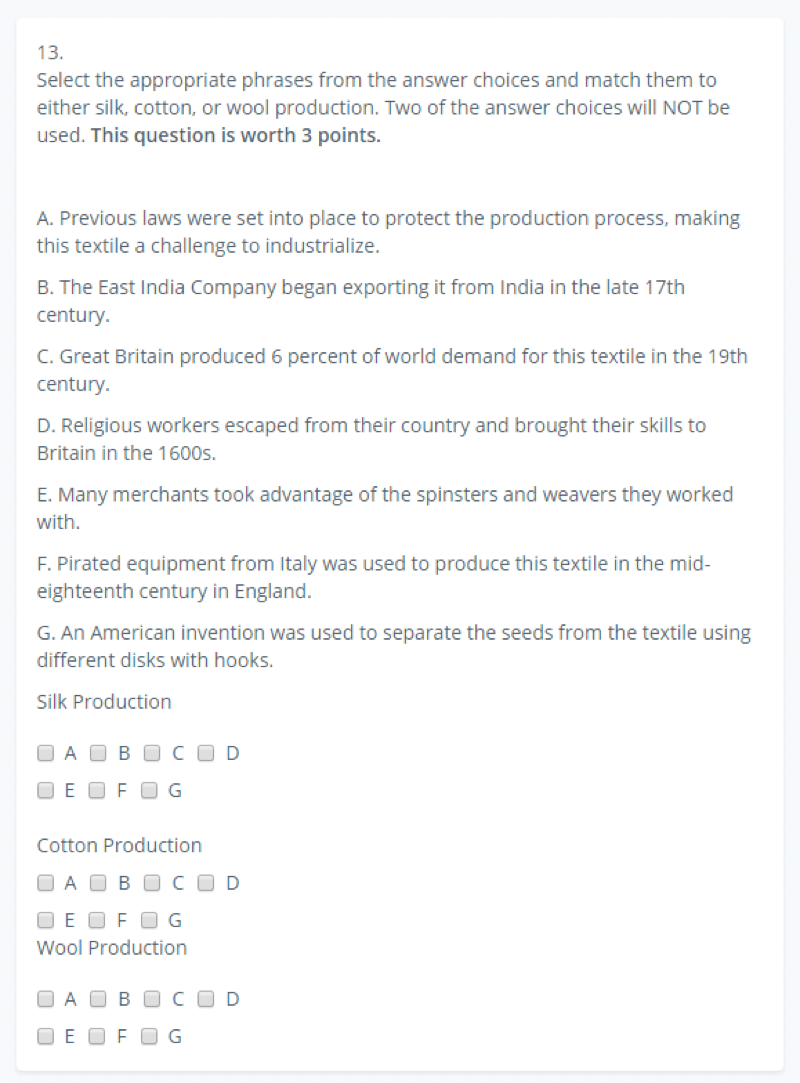Learn how to interpret summary and tables
Certain types of questions on the TOEFL IBT will ask you to either Complete the Summary or Complete the Table.
Complete the Summary
Explanation
The Complete the Summary questions are worth two points. You are given a statement that summarizes the passage, and you must choose which three answer choices represent main ideas from the passage.
Example
The example below shows us what a typical Complete the Summary question will look like.

You typically do not need to refer back to the passage for this type of question. However, you must be sure to read all six answer choices before making your selections. Remember, you are looking for the answers that represent main ideas in the passage.
- (A) mentions a minor detail that is not relevant to the summary of the passage, so we can cross that out.
- (B) seems like a sentence representing a main idea.
- (C) mentions another main idea from the passage.
- (D) is too specific for our purposes.
- (E) is another broad, main idea of the passage.
- (F) is another minor detail that is not relevant to the summary of the passage.
From this information, we can conclude that (B), (C), and (E) are the three correct answer choices. The other three incorrect choices are far too specific to be considered general ideas.
Tips
- The three correct choices will not have exact wording from the passage.
- The three incorrect choices will have minor details or unimportant information from the passage.
Complete the Table
Explanation
This question will test your ability to organize main ideas from the passage. If the question has 5 correct answers, it will be worth 3 points; if it has 7 correct answers, it will be worth 4 points.
Example
Below is an example of a Complete the Table question. In this example, you are given seven answer choices. You need to match five of them to either Silk Production, Cotton Production, or Wool Production. Remember – two of the answer choices will not be used.

This question can be time-consuming, as you will need to frequently refer back to the text to find certain information.
The best way to go about this question is to read each of the answer choices individually, then go back and try to find it in the text. If you cannot find it, chances are you can mark it off as an incorrect answer choice. If you can find it, try to sort it into one of the three categories.
For example, sentence A says Previous laws were set into place to protect the production process, making this textile a challenge to industrialise. Scanning the text for information similar to this sentence would lead us to Paragraph 5:

The first sentence of Paragraph 5 says Wool production was difficult to mechanmechanisese centuries-old laws protected traditional ways of making it. This is pretty similar to what choice (A) says, so we can categorize it under Wool Production. You will continue in this manner for each answer choice.
Tips
- Always make sure you can back up your answer choices with information from the text.
- Remember, two answer choices will not be used and each correct answer choice will be used only once!
Check here the other Tips and skills:

